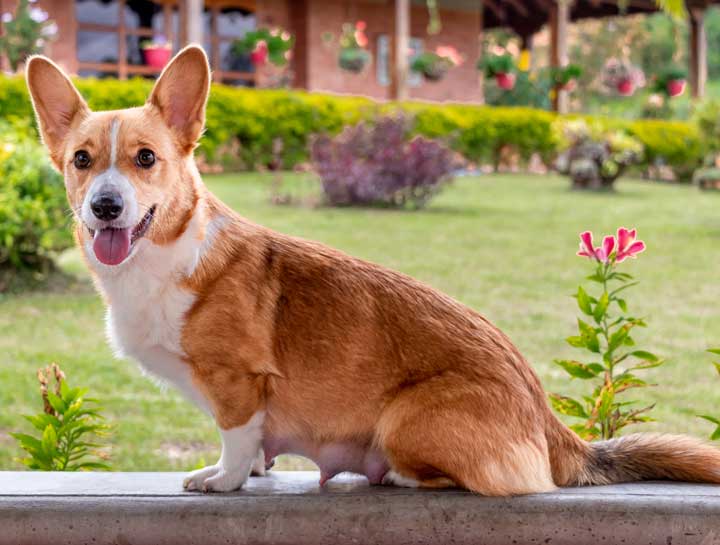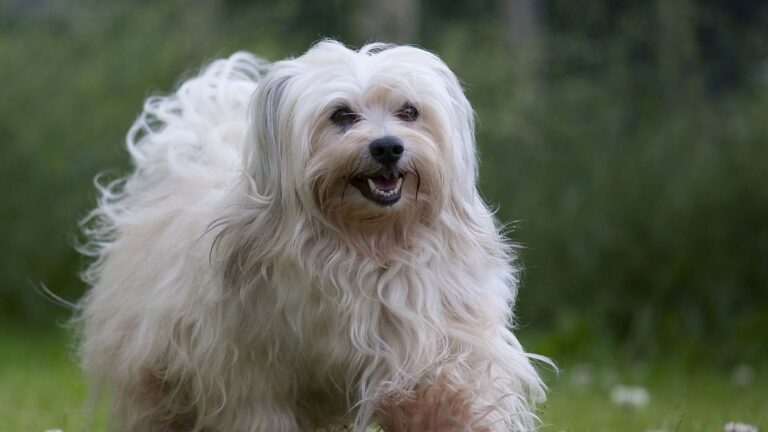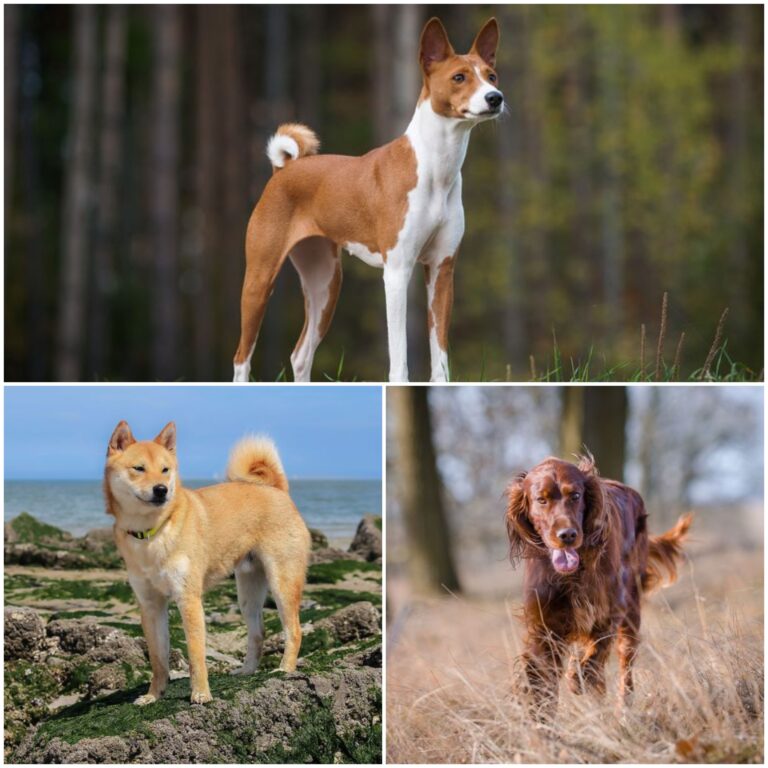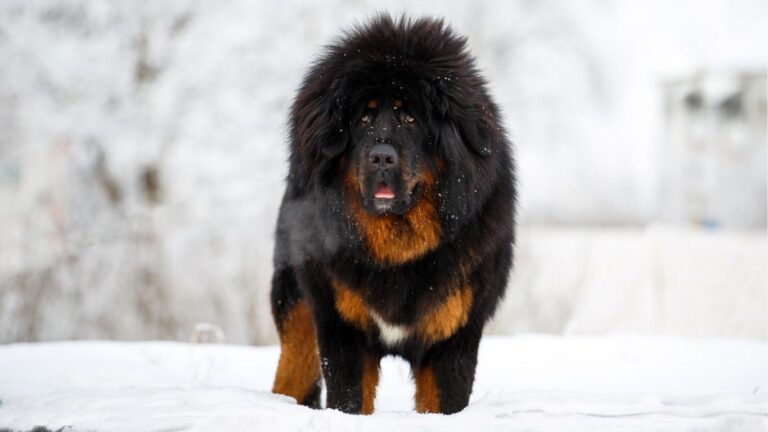Do Small Dog Breeds Breathe Faster? The Surprising Truth
Last Updated on September 9, 2024 by Petpalace54
Yes, small dog breeds tend to breathe faster than large dog breeds. The breathing rate of a dog is determined by its size, with smaller dogs having a faster respiratory rate than larger dogs.
Dogs are amazing animals that come in all shapes and sizes, with different breeds displaying unique characteristics. Among these characteristics is the breathing rate, which varies depending on the size of the dog. Small dogs are known to breathe faster than larger dogs.
This is because a dog’s breathing rate is determined by its body size, with smaller dogs requiring a faster respiratory rate to supply sufficient oxygen to their bodies. We will delve deeper into why small dog breeds breathe faster than large breeds, and the implications of this on their health and wellbeing.
Table of Contents
Small Dog Breeds And Their Breathing Habits
Small dog breeds tend to breathe faster than larger breeds due to their respiratory system. This is because smaller dogs have smaller airways, leading to a higher respiratory rate to meet their oxygen needs. It is essential to keep this in mind while considering a small dog breed for a pet.
Small dog breeds are popular among pet owners, and it is not uncommon to see them panting or breathing faster than large dog breeds. As a pet owner or animal lover, have you ever wondered why small dog breeds seem to breathe faster than large breeds? In this section, we will take a closer look at small dog breathing habits and the factors that affect them.An Observation Of Small Dog Breathing
If you have ever observed small dogs, you might have noticed that they tend to pant more frequently and breathe faster than larger dog breeds. The reason behind this is not entirely clear, but it is believed to be linked to their body size and metabolism.Several factors may affect the breathing habits of small dog breeds. Below are some of the common factors that could contribute to faster breathing among small dogs:- Body Size: Small dogs have a relatively smaller body size than larger breeds, which means they have to work harder to regulate their body temperature.
- Metabolism: Small dogs have a faster metabolism than larger breeds, which means their bodies produce more heat and require more oxygen and energy to function properly.
- Exercise: Small dogs tend to be more active and energetic, which means they engage in more physical activities that require them to breathe faster.
- Health Conditions: Certain health conditions like heart disease, obesity, and lung infections can affect small dogs’ breathing habits and cause them to breathe faster.
- Anxiety: Small dogs are known to be prone to anxiety, which could cause them to breathe faster and pant more frequently.
Why Do Small Dogs Breathe Faster?
Have you ever noticed that small dog breeds tend to breathe faster than their larger counterparts? While it may seem concerning, it’s actually a common trait among small dogs. In this post, we’ll explore the science behind small dog breathing and the role of metabolism.
The Science Behind Small Dog Breathing
Small dogs have a higher respiratory rate compared to larger dogs. The reason for this is that small dogs have higher energy needs due to their small size, which means that their metabolism runs at a faster pace. As a result, their bodies require more oxygen, and they need to breathe faster to meet these needs.
Another factor that contributes to small dog breathing is their physical anatomy. Small dogs have smaller lung capacity and narrower airways, which means they need to inhale and exhale at a faster pace to maintain proper oxygen levels in their bodies.
The Role Of Metabolism In Small Dog Breathing
Metabolism plays a significant role in small dog breathing. Small dogs have a faster metabolic rate than larger dogs, which means their bodies burn through calories at a faster pace. This increased metabolism leads to an increased need for oxygen, which is why small dogs breathe faster.
Aside from their higher energy needs, small dogs also have a higher surface area to body weight ratio, which means they lose heat faster and need to breathe faster to maintain their body temperature. This is why small dogs tend to pant more often than larger breeds, especially in hot weather.
Conclusion
Overall, small dog breeds breathe faster due to their higher metabolic rate, smaller lung capacity, and narrower airways. This is a natural trait of these breeds and shouldn’t be a cause for concern unless there are other underlying health issues. If you have a small dog, it’s essential to keep an eye on their breathing rate and seek veterinary attention if you notice any abnormalities.
Significance
Dogs are one of the most beloved pets known to mankind. They come in different shapes, sizes, and breeds. One interesting fact about them is that some breeds have a faster breathing rate compared to others. This brings us to the question, do small dog breeds breathe faster than large breeds?
Why The Breathing Rate Of Small Dogs Is Important
As much as breathing is one of the natural processes in life, it is essential to pay attention to the rate. Small dog breeds like Chihuahuas, Pekingese, and Boston Terriers, to mention a few, have a higher respiratory rate than larger breeds like Great Danes and Mastiffs.
The size of their air pipes and the volume of oxygen required to fuel their body determines the breathing rate of a dog. Increased respiration rate could be a sign of respiratory distress, stress, or other underlying medical conditions.
The Benefits Of Knowing A Small Dog’s Breathing Rate
Knowing the normal breathing rate of small dog breeds is essential to ensure their welfare. It helps identify any early signs of respiratory distress, and seek early medical intervention. This knowledge is also crucial when selecting the right dog breed for your lifestyle.
Additionally, understanding the breathing rate of small dogs is essential when preparing for exercise. Their breathing rate should not increase significantly during activities like jogging, playing, or walking over short distances. Any sudden increase in breathing rate could signify medical problems like respiratory diseases or cardiovascular diseases.
In conclusion, understanding the breathing rate of small dog breeds is critical as it helps ensure their well-being, and early medical attention can be provided if necessary. Whether you have or are contemplating adding a small breed to your family, knowing their respiratory rate should be a top priority.

Credit: www.neewadogs.com
Factors Affecting Small Dog Breathing
The size of a dog breed can have an impact on its breathing rate, with small breeds often breathing faster than larger breeds. Factors such as weight, age, and activity level can also affect a small dog’s breathing. It’s important to monitor and address any breathing difficulties to ensure your small dog’s health and wellbeing.
Small dog breeds are adorable and make great companions. Many people prefer these breeds due to their small size and low maintenance. However, small dogs may breathe faster than their larger counterparts, and pet owners often wonder why. There are several factors that affect small dog breathing, and in this blog post, we will discuss these factors in detail.Age and health are two important factors that affect small dog breathing. Older small dogs may experience difficulty breathing due to age-related conditions such as arthritis, which can affect their lungs and breathing muscles. Furthermore, small dogs with pre-existing health conditions such as heart disease or respiratory issues may experience faster breathing rates. Hence, it’s essential to take your dog to regular checkups with a veterinarian to ensure good health and well-being.Size and weight also play an important role in small dog breathing. Small dog’s narrow airways and small lung capacity are two factors that can cause them to breathe faster at times. Additionally, obesity may lead to worsened breathing difficulties in a small dog, making it harder for them to breathe efficiently. Therefore, maintaining the appropriate weight and size is essential for small dogs to have healthy respiratory systems.In conclusion, factors such as age, health, size, and weight can all affect small dog breathing rates. Pet owners must take necessary steps to ensure their furry friend’s overall health, including regular checkups with a veterinarian, maintaining a healthy weight, and providing a suitable living environment. Proper care and attention towards small dog breeds will lead to a happy, healthy, and fulfilled relationship.Breathing Problems And Small Dog Breeds
Small dog breeds are cute, cuddly and make great companions. However, these little pups often struggle with breathing problems. Many pet owners believe that their small dogs simply breathe faster than their larger counterparts, but this isn’t always the case. Breathing problems in small dog breeds can be caused by a variety of factors, from genetic predisposition to environmental factors.
Common Breathing Problems In Small Dog Breeds
Small dog breeds are prone to certain breathing problems that can cause discomfort and even lead to serious health complications if left untreated. Here are some of the most common breathing problems in small dog breeds:
- Tracheal Collapse: This condition occurs when the cartilage in a dog’s windpipe weakens and starts to collapse. It can cause a honking cough and difficulty breathing.
- Brachycephalic Airway Syndrome: This is a group of respiratory problems that affect dogs with short, flattened faces like Pugs and Bulldogs. It can cause breathing difficulties and even lead to heatstroke.
- Collapsed Nostrils: This occurs when a dog’s nostrils are too narrow or collapse inward, making it difficult to breathe through the nose.
How To Take Care Of A Small Dog With Breathing Problems
If you suspect your small dog has a breathing problem, it’s important to get them to a vet for an evaluation. In the meantime, there are some steps you can take to help them breathe more comfortably:
- Keep them at a healthy weight: Excess weight can put extra pressure on a dog’s respiratory system, making breathing problems worse.
- Avoid strenuous exercise: Overexertion can trigger breathing difficulties, so take things slow and easy.
- Use a harness instead of a collar: Collars can put pressure on a dog’s windpipe, so using a harness can be a more comfortable option for dogs with breathing problems.
- Keep them cool: Dogs with respiratory problems can have a harder time regulating their body temperature, so keep them in a cool, comfortable environment.

Credit: www.healthline.com

Credit: www.bonza.dog
Frequently Asked Questions Of Do Small Dog Breeds Breath Faster Than Large Breeds
Do Small Dogs Breathe Faster Than Large Dogs?
Yes, Small dogs have a faster breathing rate than large dogs. This is because their smaller respiratory system has to work harder to move air in and out. Small dogs take more breaths per minute to provide enough oxygen to their bodies.
What Dog Breeds Breathe Fast?
Breeds that tend to breathe fast include pugs, bulldogs, Boston terriers, boxers, and Shih Tzus. These breeds have short muzzles, which can lead to respiratory problems. Their breathing issues can worsen during hot weather and exercise. It’s important to monitor their breathing and seek veterinary care if necessary.
Do Small Puppies Breathe Faster?
Yes, small puppies tend to breathe faster than larger dogs. This is because their small respiratory system has to work harder to get enough oxygen. However, if you notice excessive panting or labored breathing, consult a veterinarian immediately.
Do Some Dogs Naturally Breathe Fast?
Yes, some dogs naturally breathe fast. This can be due to their breed, size, or physical condition. However, if you notice your dog breathing heavily even when at rest, it could indicate a health problem, and you should consult a veterinarian.
Conclusion
Ultimately, the answer is yes, small dog breeds do tend to breathe faster than their larger counterparts. However, this is not necessarily a cause for concern. Small dogs have naturally faster metabolic rates and smaller airways, which can lead to a quicker respiratory rate.
As long as your small dog is not exhibiting any signs of distress or respiratory issues, there is no need to worry. It’s just another fascinating difference between large and small dog breeds.






